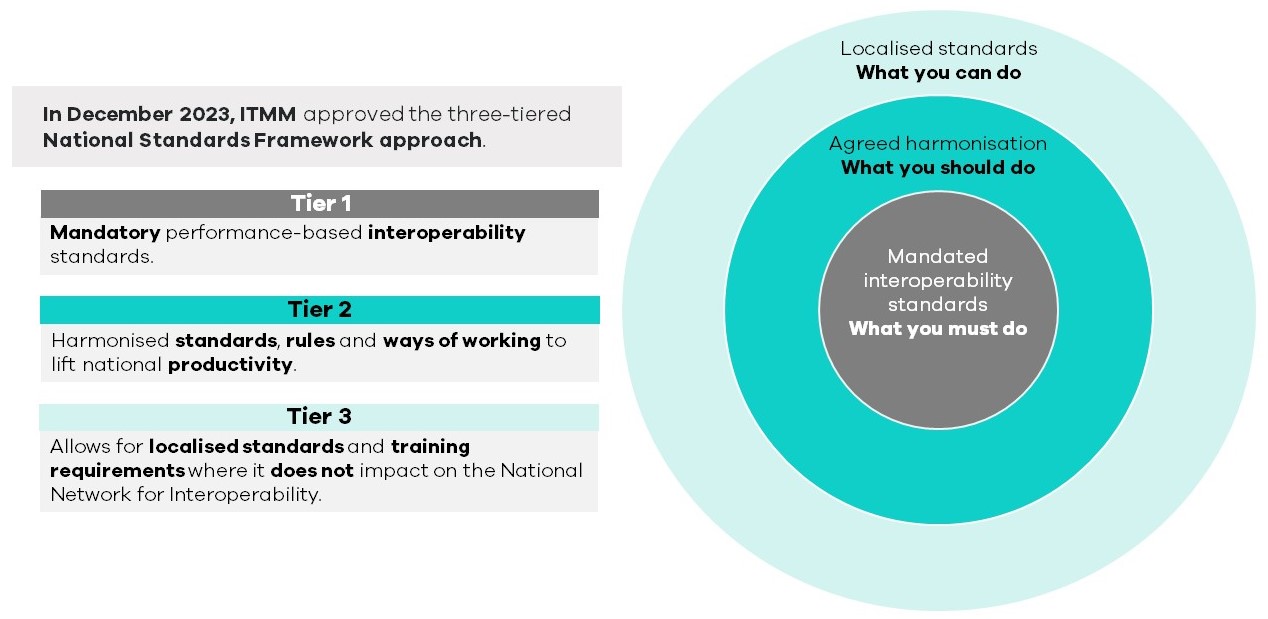A National Rail Standards Framework
The NTC is working with industry and governments to develop a national standards framework.
The three-tiered national standards framework will include mandatory, model, and local standards.
National Rail Standards Framework
A small number of critical mandated standards will focus on:
- streamlining digital train technology
- providing a single on-board interface to reduce the burden on drivers and crew
- streamlining rolling stock approvals processes so it is easier to deploy modern trains across networks.
Model standards will provide a best practice approach to harmonising operating processes, rolling stock componentry and worker accreditation.
Local standards will help to address specific issues relating to local networks.
As part of our standards program, we’re working with the Rail Industry Safety and Standards Board (RISSB), the Australasian Railway Association (ARA) and the Office of National Rail Industry Coordination (ONRIC) to implement freight productivity and safety recommendations from the ARA’s Future of Freight report.
The NTC has also partnered with the ARA, RISSB and ONRIC on research to understand why rail organisations have been reluctant to adopt existing international and Australian standards. This understanding will help to support the development, rollout and uptake of standards in the future.
Building on existing strategies
The NTC is working closely with ONRIC to ensure our work complements its National Rolling Stock Procurement and Manufacturing Strategy. The strategy outlines how the Australian government will work with jurisdictions, industry, and unions to deliver a more cooperative and collaborative approach to passenger rolling stock procurement.
The national standards framework also builds on the NTC’s three-year harmonisation plan delivered in partnership with RISSB. The three year-plan provides common standards and products for rail infrastructure and rolling stock componentry.
If rail operators adopt these standards, we can build scale. This will open up opportunities for local manufacturing, create skilled jobs and help secure Australia’s rail supply chain.
Standards and products have been delivered for:
- Wheelsets
- Rolling Stock – Heating, Ventilation, and Air-Conditioning
- Onboard Electrical Energy Storage
- Brake Components – Part 2 Brake Discs and Pads
- Rolling Stock – Suspension springs and dampers
- Locomotive and Passenger Vehicle Flooring
- Phase 1 of the National Rolling Stock Register
- A code of practice for Rail Traffic Horn Use.
Benefits and priorities
High-level benefits of harmonisation include:
- improved safety and operational efficiency
- lower training costs
- broader markets for components, providing an incentive for investment in local manufacturing.
The plan’s priorities are driven by the procurement schedule for upcoming projects. The focus is on harmonising standards for components where maximising buying power will have the most value and bring economic benefits.
Contact us
- Log in to post comments

